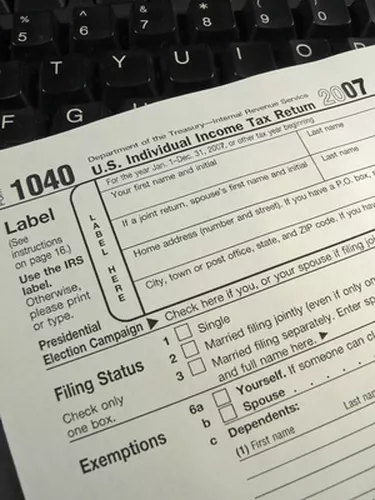
Expenses and deductions are linked, but not identical, concepts in income taxes. Many of the expenses you incur during a tax year can be transformed into deductions when you file your taxes. Deductions, simply stated, mean you have to pay less in tax. There are many different types of deductions, but the three general categories you should be familiar with are above the line, below the line and standard.
Expenses
Video of the Day
As the name implies, an "expense" is any amount of money you had to spend to do anything. Expenses relevant to taxes include purchases made for business reasons, interest on student loans and charitable donations -- in this last case, the expense is the money you might have made by selling whatever you donated.
Video of the Day
Deductions
Deductions are amounts of money taken out of your "taxable income." Your taxes are computed as a percentage of your income; with deductions, your income will be calculated lower, and so will your taxes. Deductions are thus not the same as expenses, but they arise from them. If you can prove a particular relevant expense, you can deduct it on your taxes. For example, if you run a small business and recently purchased a computer system to keep track of inventory, you can claim a tax deduction based on the expense. Rules for deductions depend on the type of expense and are available from the IRS and from your state's revenue authority.
Standard Deductions
The IRS offers an across-the-board tax deduction of a certain amount for each tax category. For example, in 2010, single taxpayers under 65 could automatically deduct $5,700. This is called a "standard deduction," and when filing your taxes you can choose whether or not to claim it. If you don't claim the standard deduction, the sum of all your individual deductions will be deducted from your taxes instead. This is a simple decision: Add up all the deductions you could claim, compare them to the standard deduction for your tax bracket and pick whichever is higher.
Above-the-Line Deductions
The deductions described above, including the standard deduction, have all been "below the line." This means that they're computed after you work out your gross income for the year and then deducted from that amount to determine your taxable income. "Above the line" deductions, however, are computed as part of the gross income calculation. Interest paid on student loans, for example, is an above-the-line deduction -- you remove it from your gross income before moving on to your itemized or standard deductions. The above-the-line deductions you take have no effect on whether you choose standard or itemized deductions below the line.